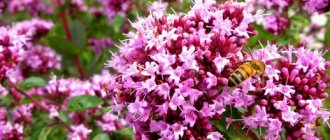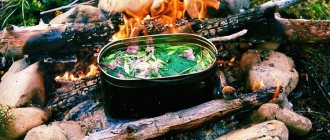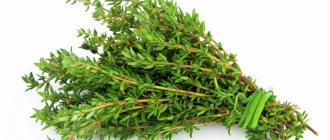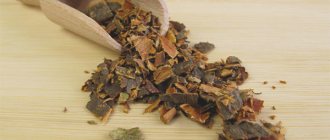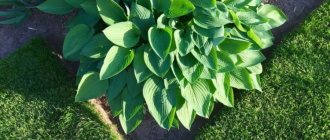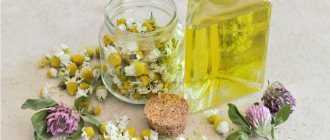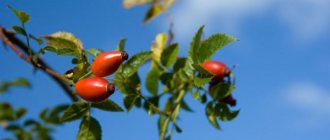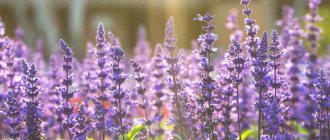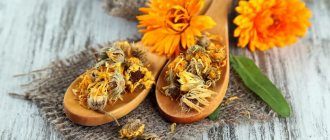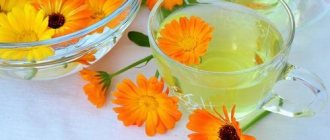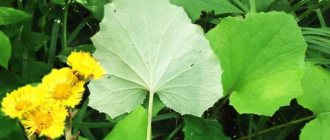Clover belongs to the legume family. The perennial blooms throughout the summer and is often used as food or medicine for livestock. In terms of nutritional value, it is in no way inferior to alfalfa. The stems of red clover are straight and elongated. The leaves are slightly oblong, three-laminated, rich green in color with a light border in the middle.
There are legends among people about the four-leaf clover, which will bring great luck to the finder in life. The inflorescences of the perennial are collected in a dense “bump”. The outer ones are decorated with delicate eyelashes. The “bump” is supported by a cup of three leaves. The color of the head is more fuchsia than red.
In botanical reference books, two perennials are called red: red clover itself (Trifolium Rubens) and its closest relative, meadow clover (Trifolium Platense). These types should not be confused. In some countries, red clover is listed in the Book of the same name as a rare species (for example, Ukraine). Although the plants belong to the same botanical genus, they differ in appearance (leaves and the shape of the “bumps” of the inflorescences).
Clover grows in meadows (as is clear from the “official” name), small clearings, forest edges and along roadsides, that is, the perennial prefers open spaces generously flooded with sun. Let's find out how red clover is useful for humans and what home remedies can be made based on it.
White clover or creeping clover
White clover (Trifolium repens L) is a biennial plant. Height 5-25 cm. Blooms from May to September. The flowers are white in the form of a bell-shaped cup. Seeds begin to ripen in June-July.
Composition of creeping clover
The composition of white clover is almost similar to that of red clover, but there are some differences. For example: contains more protein, fat, fiber and nitrogen-free extractives. Due to this, it is a nutritious fodder plant and an excellent honey plant. But the honey production of flowers is not stable and depends on growing conditions.
Medicinal properties
Traditional healers mainly make an alcohol tincture from white clover, which is used for hernia, tuberculosis and colds. Useful for women - used to treat female diseases.
Botanical description of clover
Red clover is a perennial herbaceous plant 20-50 cm high. The root is taprooted, branched, often with nodules of nitrogen-assimilation bacteria. From the axils of the basal leaves emerge flowering stems with trifoliate leaves that fold at night. The leaves are trifoliate, the lower ones are on long, the upper ones are on short petioles; the leaflets of the lower leaves are obovate, the upper ones are oval or ovate, usually more pubescent below. Clover flowers are irregularly shaped, pink or red, 11-14 mm long, sessile, located in capitate inflorescences, the last two leaves are close together at the base. The fruit is a single-seeded ovoid bean with small ovoid flattened seeds of yellow or brown color. Red clover blooms from May to September.
Interesting things about clover...
Clover seeds germinate even a year after infusion in alcohol and during the growing season they bloom luxuriantly and produce normal seeds.
Trifolesin, an antifungal substance, has been isolated from clover roots.
Clover is also used in cooking. The plant has good nutritional properties. Young clover leaves are placed in salads, vinaigrettes, and added to soups. In Germany, clover replaces spinach; in Ireland, the dried and ground plant is added to flour for baking.
The Latin generic name for clover, Trifolium, translates to “shamrock.” The shamrock is even featured in the Irish flag and is a folk symbol of Ireland and the Irish in general and Irish Christianity in particular.
And the four-leaf clover is considered a symbol of good luck by some peoples.
Preparation and storage
Clover flowers and apical leaves are used for medicinal purposes. The procurement of raw materials is carried out during flowering, since it is at this time that the plant contains the largest amount of biologically active substances.
The inflorescences together with the wrapper are cut with a knife or carefully picked by hand, placed in baskets and dried under a canopy, in the shade or in special dryers at a temperature of no more than 60-70 degrees Celsius. It is necessary to carefully ensure that the raw material does not dry out, otherwise it will lose its healing properties.
The finished product is stored in a closed container. The shelf life of grass is 12 months, flowers - 24 months. Rarely, clover roots are used as medicinal raw materials, which are collected and dried in the usual way.
Harm, contraindications of clover
Clover seems to be a harmless herb, the use of which has only benefits, but the plant can also cause harm to humans.
Stomach pain and diarrhea may appear, although in some cases healers, on the contrary, treat stomach pain and colic.
Few people know that red clover should not be used for estrogen-dependent forms of cancer.
Clover is undesirable if you are prone to heart disease, strokes or thrombophlebitis.
It is contraindicated during pregnancy.
Contraindications and side effects
For most people, red and white clover are not harmful when taken orally or applied to the skin.
The plant cannot be used:
- Pregnant and lactating women. Clover acts similarly to estrogens, so it can disrupt the hormonal balance in the body. This prohibition also applies to external use.
- In people suffering from blood disorders, consumption of this medicinal plant may cause bleeding. Since clover thins the blood, it should not be taken 2 weeks before or after surgery.
- For stomach upsets.
- Heart patients and stroke survivors.
- With estrogen-dependent forms of cancer (fibroids and uterine cancer, endometriosis, ovarian and breast cancer), the patient's condition may worsen.
- If you suffer from thrombophlebitis, clover will only bring you harm. This plant increases the risk of blood clots in people with protein S deficiency.
As you can see, the list of contraindications is quite extensive. Now let's talk about possible side effects:
- skin rash,
- muscle pain,
- headache,
- nausea,
- vaginal bleeding in some women.
But the harm of red and white clover is not limited to this. If you decide to use the plant for medicinal purposes, you should know which medications have negative interactions:
- Estrogens in tablets (they may contain estradiol, ethinyl estradiol or conjugated equine estrogens - premarin).
- Contraceptives containing ethinyl estradiol and levonorgestrel - triphaliz, ethinyl estradiol and norethindrone - ortho-novum.
- Liver enzymes and other drugs to treat the liver. Clover can increase the side effects of medications and interfere with their breakdown.
- Medicines that slow down blood clotting: aspirin, clopidogrel (Plavix), diclofenac, ibuprofen, naproxen, heparin, warfarin and others.
- Tamoxifen, used in the treatment and prevention of cancer. Red clover preparations reduce its effectiveness.
A few more words about the dangers of clover.
A diet high in these compounds caused reproductive problems and liver damage in captive cheetahs. And farmers have noticed that the predominance of red clover in the diet of livestock leads to the so-called “clover disease.” Infertility, dystonia, impaired lactation and uterine prolapse have been observed in sheep. Draw your own conclusions.
Phytolacca - beneficial properties and contraindications.
Traditional recipes or the use of clover for medicinal purposes
Red clover is used more than white clover, so here we will give recipes for treating diseases with red clover (meadow).
Tea from the inflorescences of the plant is drunk for uterine bleeding, anemia and exhaustion, and is used as an expectorant, diuretic and anti-inflammatory agent.
Clover infusion is used for painful menstruation as an emollient and analgesic. Crushed leaves are applied to purulent wounds and ulcers and used to treat bedsores.
Clover is useful for diabetes, insomnia, joint diseases, etc.
Use for diseases of the heart and blood vessels
Leafy heads of clover, which were collected during the flowering period, are used for atherosclerosis with normal blood pressure, accompanied by headaches and tinnitus.
40 grams of raw materials are infused in half a liter of vodka for ten days. Next, filter and take 20 ml before lunch or before bed.
The course of treatment is three months, with a break of ten days. You can repeat it in six months.
Attention: only applies if the pressure is normal.
Cleansing blood vessels and improving cerebral circulation
A tincture of red clover flowers helps to cleanse blood vessels and improve cerebral circulation.
First version of the recipe:
To prepare, fill a liter jar with fresh flower heads (without killing them) and fill to the top with vodka, close tightly and store for ten days at room temperature. Then they filter and squeeze out the raw materials.
Take a tablespoon twice a day, diluting 50 grams with boiled water. The course of treatment is one and a half months, then take a break for 10 days and repeat the treatment.
Second recipe option:
Infuse a glass of red clover leaves in 0.5 liters of vodka for two weeks. Next, strain and squeeze out the remainder. Take two teaspoons daily before lunch or at night before bed.
This course is called the “summer course against atherosclerosis,” so you should start with the appearance of the first leaves of red clover. It lasts exactly 3 months, with ten-day breaks after each month of taking the medicine.
One cycle of treatment with clover lasts for three years, after which it can be repeated.
The use of clover for multiple sclerosis
Three teaspoons of clover flowers or seeds (the seeds can be collected in the fall) are poured with a glass of boiling water and left for an hour.
Take 1/4 cup 3–4 times a day 20 minutes before meals. You can swallow the seeds three times a day, 1 teaspoon three times a day between meals, with water. The action will be the same.
How to collect clover
In order for all of the listed methods of preparing a healing elixir to give a good result, you need to use a high-quality collection. You can collect clover with your own hands in meadows and fields, away from industrial zones and major roads, in dry, warm weather. Collection time is the flowering period.
Drying the collected leaves and inflorescences at home is not difficult. Any well-ventilated room with low humidity and shaded from sunlight is suitable for this. It is best to store harvested clover in linen bags or cardboard boxes for no more than a year.
You don’t have to go far to find a wonderful flower. It can easily be grown right in your garden or garden. Ordinary purchased seeds are suitable for this. They need to be sown in early spring in soil cleared of weeds.
Shoots appear after a week. They need to be provided with regular watering and care must be taken that they do not grow too much, otherwise the unpretentious clover will take over your entire plot and interfere with other cultivated plants.
Clover infusion and ointment
How to make clover infusion
Pour 1 tablespoon of clover into a glass of boiling water, leave for an hour, take 1/4 cup three to four times a day.
It is used for lung diseases as an expectorant and cough softener.
How to make clover ointment
Dried clover inflorescences are ground into powder. 50 g of powder is mixed with 50 g of butter (unsalted) or Vaseline.
Used externally for tumors or hardening of the breast, and for skin cancer.
Red clover and its medicinal properties for women
Painful and irregular periods
Pour two tablespoons of red clover into a glass of boiling water, close the lid and leave for 8 hours or leave overnight. Drink 1/4 cup during the day, 20–30 minutes before meals.
Treatment of ovarian inflammation with clover
Pour one tablespoon of clover roots into a glass of boiling water and keep in a water bath for 30 minutes. Cool, strain. Take 1 tablespoon 4-5 times a day before meals.
For inflammation of the appendages
Boiled clover roots are used in medical nutrition as an antitumor agent for inflammation of the appendages (additionally eat 1 tablespoon per day during meals, add to soups and porridges).
Chemical composition of clover
The green mass of clover contains essential and fatty oils, tannins, glycosides trifolin and isotrifolin, organic acids (p-coumaric, salicylic, ketoglutaric), sitosterols, isoflavones, resins, vitamins (ascorbic acid, thiamine, riboflavin, carotene, tocopherol). During the flowering period, the aerial part contains protein (20-25%), fats (2.5-3.5%), carotene (up to 0.01%), ascorbic acid (up to 0.12%), free amino acids (up to 1.5%), fiber (24-26%), nitrogen-free extractives (more than 40%), calcium and phosphorus salts. Flavones and flavonols (kaempferol, quercetin, pratoletin, etc.), isoflavones (genistein, formononetin, etc.) were found in grass and flowers. Clover leaves contain maakiain, a flavonoid from the pterocarpan group, which has fungicidal properties [3]. Up to 150 kg/ha of nitrogen accumulates in clover roots after mowing the above-ground parts. The content of essential oil in clover flowers reaches 0.03%; it contains furfural and methyl coumarin. Up to 12% of semi-drying fatty oil was found in clover seeds.

